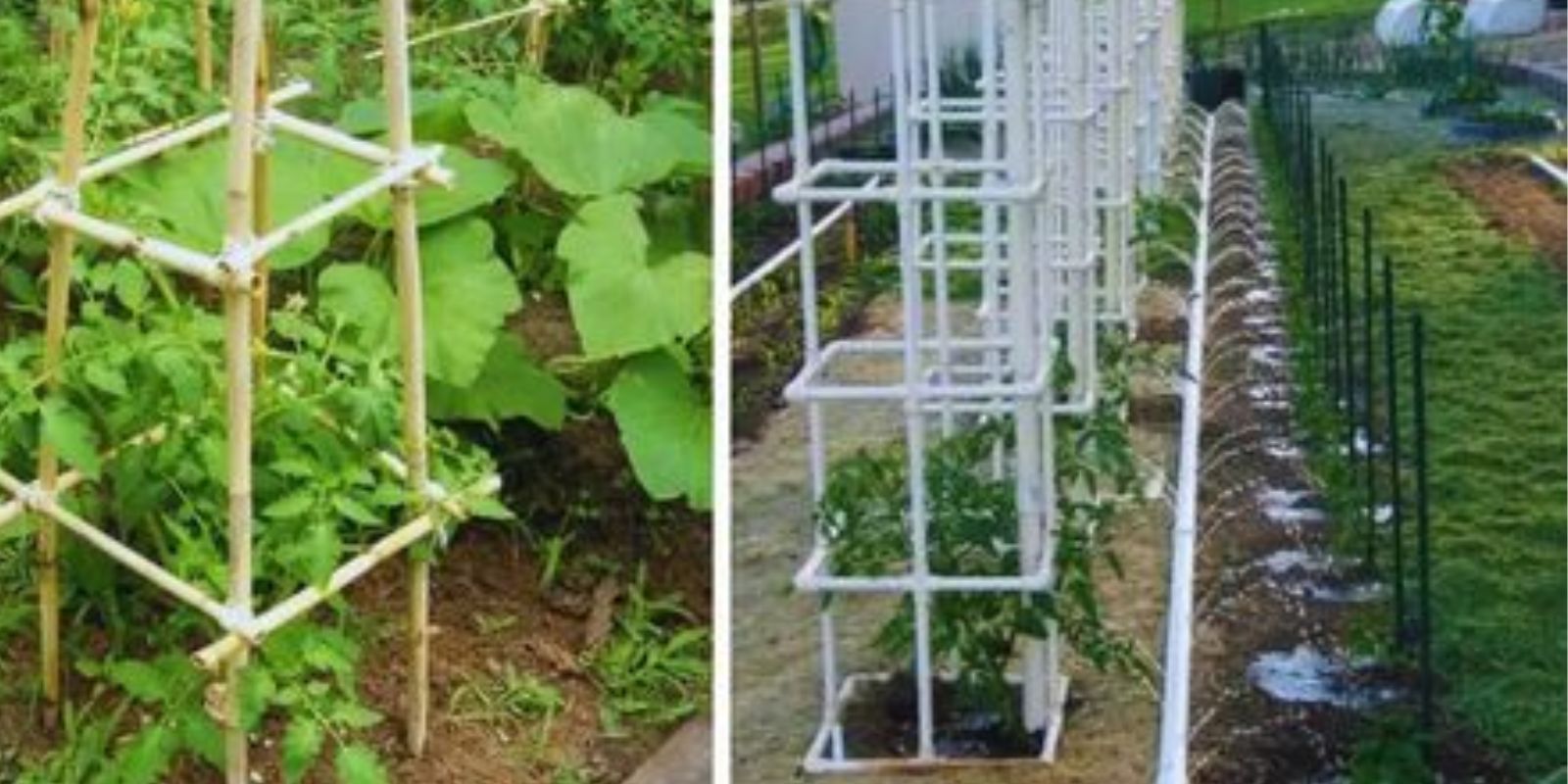Gardening is not just a hobby but a therapeutic activity that connects us to nature and rewards us with fresh produce. When it comes to growing tomatoes, providing adequate support is crucial for healthy plants and a bountiful harvest. A DIY budget wooden tomato trellis offers an efficient and cost-effective solution to support your tomato plants while adding a rustic charm to your garden landscape. In this article, we’ll guide you through the steps to build your own wooden trellis, discuss its benefits, and provide tips for maximizing its effectiveness.
Understanding the Importance of Tomato Trellising
Tomatoes are vigorous growers that benefit greatly from vertical support. Trellising helps in several ways:
- Improved Air Circulation: Vertical growth reduces the risk of fungal diseases by allowing better air circulation around the plants.
- Optimal Sunlight Exposure: Elevated vines receive more sunlight, which is essential for photosynthesis and fruit ripening.
- Space Optimization: Trellising saves garden space, making it easier to manage plants and harvest ripe tomatoes.
Building a wooden tomato trellis not only supports these needs but also adds a touch of creativity and personalization to your garden.
Materials Needed for DIY Budget Wooden Tomato Trellis
Before you begin, gather the following materials:
- Wooden Stakes: Choose sturdy wooden stakes or posts, approximately 6-8 feet in height, depending on the expected height of your tomato plants.
- Nails or Screws: Use galvanized nails or screws to secure the structure.
- Hammer or Screwdriver: Depending on your choice of fasteners.
- Twine or Wire: For creating the trellis grid.
Opt for untreated wood to avoid chemicals leaching into the soil, ensuring the health and safety of your plants.
Step-by-Step Guide to Building Your DIY Budget Wooden Tomato Trellis
Step 1: Planning and Preparation
- Choose a Location: Select a sunny spot in your garden with well-drained soil. Ensure there’s enough space around the trellis for airflow and easy access.
- Measure and Cut Stakes: Determine the desired height of your trellis (typically 6-8 feet). Cut the wooden stakes to this height using a saw.
Step 2: Setting Up the Structure
- Dig Holes: Dig holes for each stake, ensuring they are spaced adequately apart to support the width of your tomato plants. A spacing of about 2-3 feet between stakes is usually sufficient.
- Insert Stakes: Place the wooden stakes into the holes, ensuring they are firmly planted and straight. Use a level to check alignment if building an A-frame structure.
- Secure Stakes: Backfill the holes with soil and tamp down firmly around the stakes to secure them in place.
Step 3: Adding Horizontal Supports
- Cut and Attach Crossbeams: Cut wooden slats to span horizontally between the stakes. These crossbeams provide additional support for the tomato vines as they grow.
- Secure Crossbeams: Nail or screw the crossbeams to the stakes at regular intervals, ensuring they are level and sturdy.
Step 4: Creating the Trellis Grid
- Attach Twine or Wire: Run twine or wire horizontally between the crossbeams to create a grid pattern. Start from the bottom and work your way up, spacing the lines about 6-8 inches apart.
- Tie Off Securely: Secure the twine or wire to each crossbeam using knots or staples, ensuring it can support the weight of growing tomato vines laden with fruit.
Step 5: Planting and Maintenance Tips
- Plant Tomato Seedlings: Plant tomato seedlings at the base of each stake, spacing them according to the variety’s requirements.
- Prune and Train Vines: As the tomato plants grow, gently tie the main stems to the trellis using soft garden twine or plant clips. Prune side shoots to encourage upward growth and better fruit production.
- Water and Fertilize: Water tomato plants regularly, especially during hot weather, to keep the soil consistently moist. Feed plants with a balanced fertilizer to promote healthy growth and fruit development.
- Monitor and Harvest: Regularly inspect your tomato plants for pests, diseases, and ripe fruit. Harvest tomatoes when they reach their full color and size, gently twisting or cutting them from the vine.
Benefits of a DIY Budget Wooden Tomato Trellis
- Cost-Effective: Building your own trellis using affordable materials saves money compared to purchasing pre-made structures.
- Customizable: You can tailor the size and design of the trellis to suit your garden space and aesthetic preferences.
- Enhanced Garden Aesthetics: A wooden trellis adds a rustic and natural charm to your garden, enhancing its visual appeal.
Tips for Success
- Sturdy Construction: Ensure the trellis is securely anchored in the ground to withstand wind and the weight of mature tomato plants.
- Regular Maintenance: Monitor the trellis throughout the growing season, tightening twine or wire as needed and repairing any damage promptly.
- Rotate Crops: To prevent soil-borne diseases and nutrient depletion, rotate tomato crops to different areas of your garden each year.
Conclusion
Building a DIY budget wooden tomato trellis is a rewarding project that not only supports the growth of your tomato plants but also enhances the beauty of your garden. By following these simple steps and tips, you can create a sturdy and practical structure that will provide years of support for your favorite tomato varieties. Enjoy the process of gardening and the satisfaction of harvesting delicious homegrown tomatoes from your trellised plants.
Motivation
Start your gardening journey today with this DIY project and watch your tomatoes thrive on their new trellis. Happy gardening! 🌱🍅

